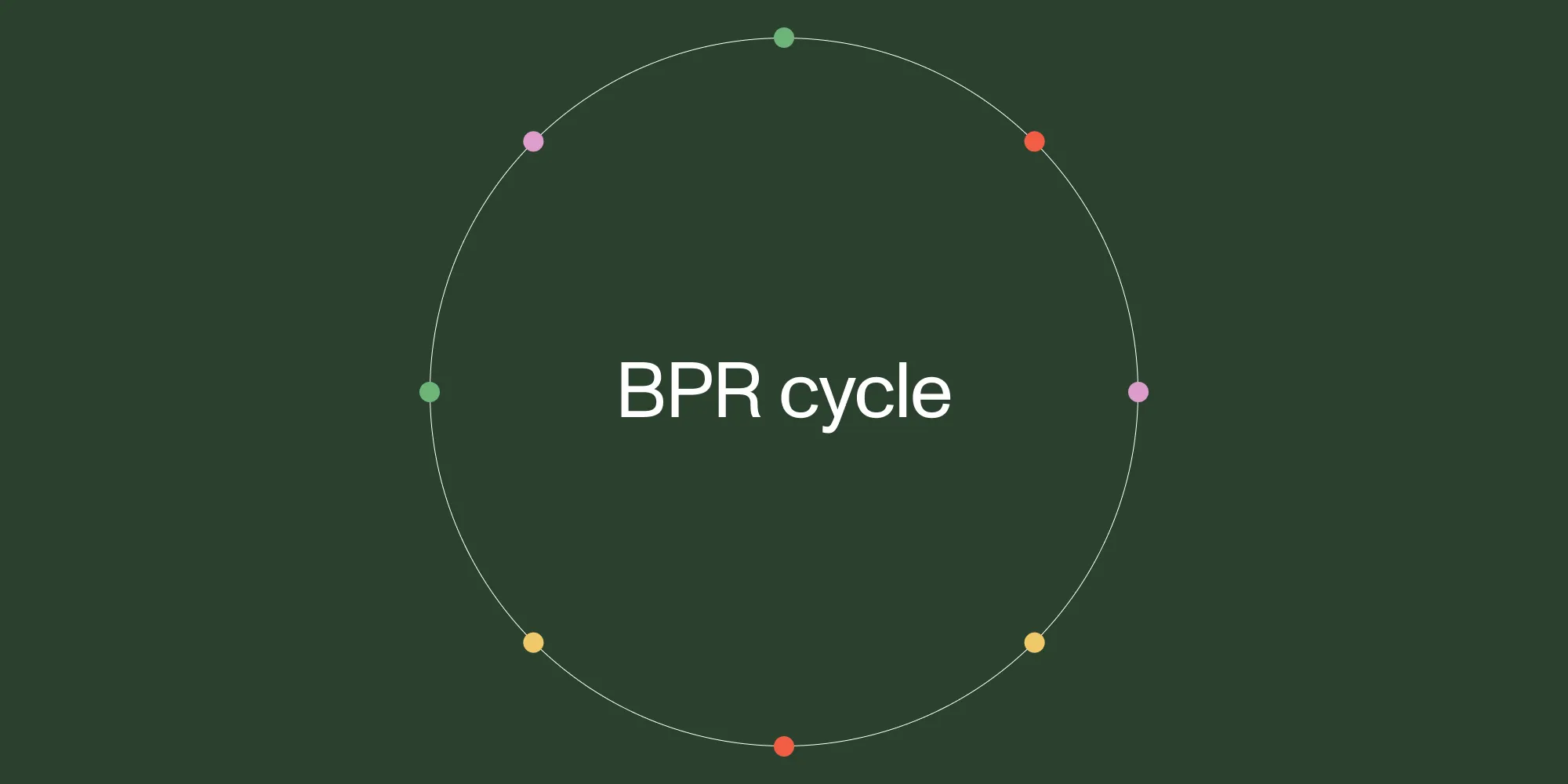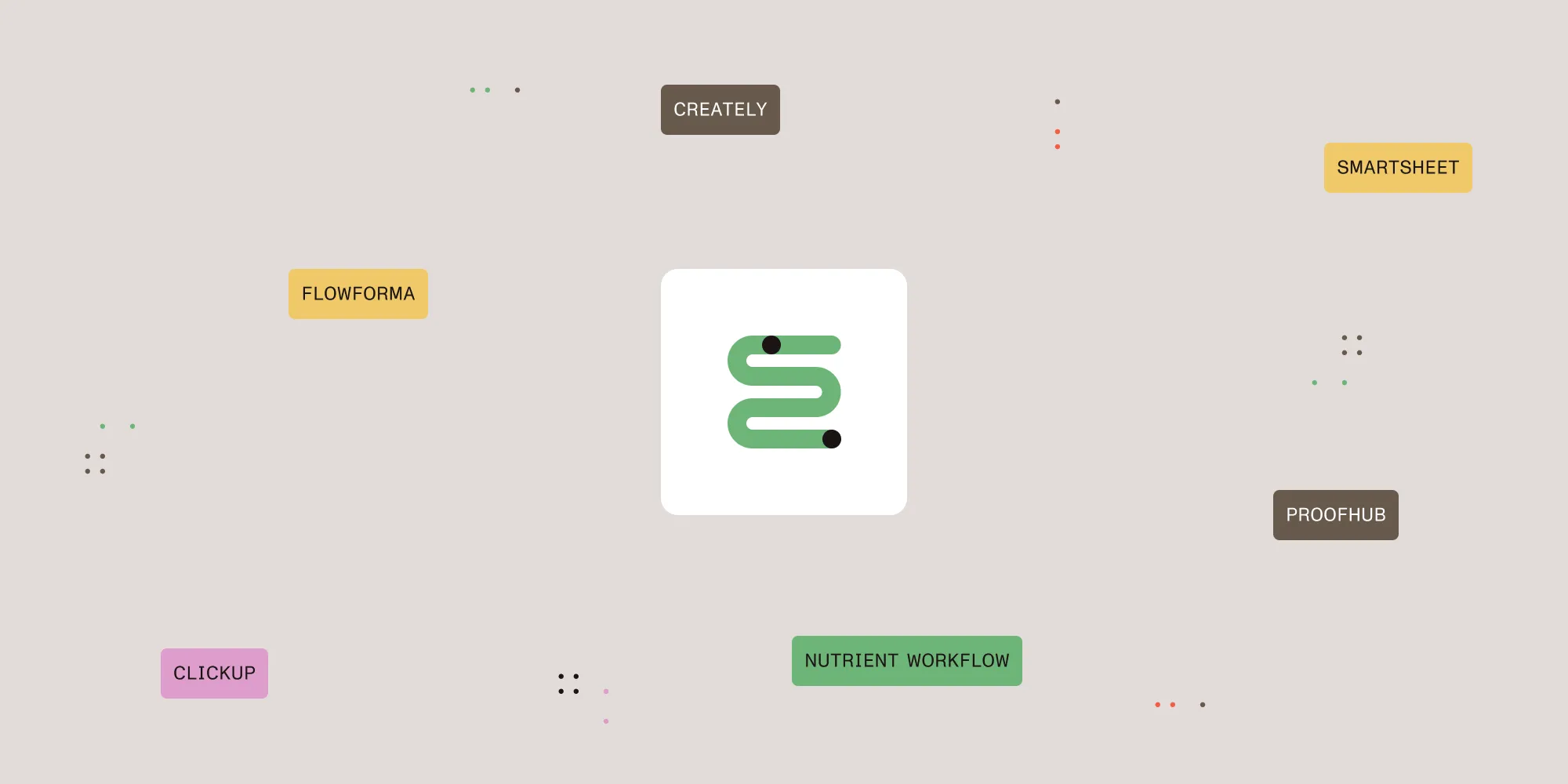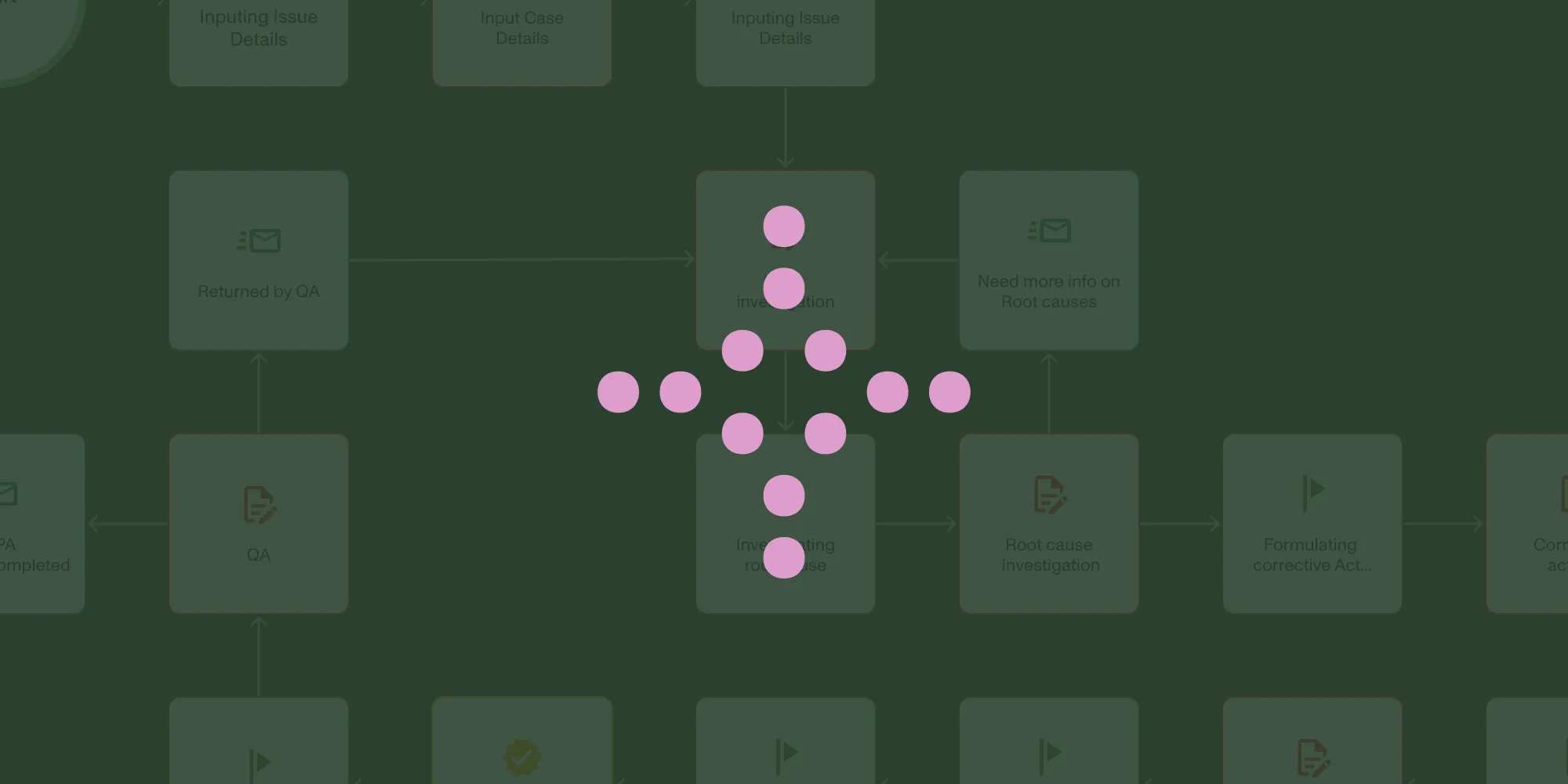What is business process reengineering (BPR)? Automate repetitive tasks with AI‑driven automation and RPA
Table of contents

- BPR is a radical redesign of core workflows to slash costs, accelerate cycle times, and boost productivity.
- Leverage AI, RPA, cloud computing, and advanced analytics to automate repetitive tasks and create end‑to‑end automated workflow management.
- Watch for common pitfalls: scope creep, data silos, change resistance, and operational fragility, and apply best practices like tight governance, integration platforms, change management, and continuous monitoring.
What is business process reengineering (BPR)?
Business process reengineering (BPR) is a radical process redesign methodology that goes far beyond incremental business process improvement. It reimagines your core business workflows end‑to‑end — leveraging AI‑driven automation, RPA, cloud computing, and advanced analytics — to achieve step‑change gains in cycle time, cost reduction, and overall process efficiency.
In large businesses — and even smaller or medium-sized ones — processes can build up over time, becoming legacy snarls deeply entrenched in how things are done. BPR is a proven methodology that allows organizations to cut the Gordian Knots that may hold back genuine improvements and cost optimization.
Watch the Nutrient Workflow Automation demonstration video and discover how you can transform your core processes with end‑to‑end automation.
Emerging technologies powering BPR
Modern BPR, as well as your journey to digital transformation, relies on a convergence of platforms and tools:
- Cloud computing — Elastic, on‑demand environments for testing/development and production, giving you a scalable backbone for workflow automation.
- Advanced analytics and process mining — Pinpoint bottlenecks, drive process optimization, and track real‑time KPIs that fuel both lean management and BPR.
- AI and machine learning — From NLP‑powered document understanding, to predictive models that forecast capacity constraints, these intelligence layers supercharge operational excellence.
- Automation platforms and RPA — Low‑code/no‑code orchestration and software “robots” that tackle repetitive tasks across legacy systems, knitting together ERP, CRM, file stores, and bespoke apps into one unified digital workflow.
When is business process reengineering required?
The need for business process reengineering surfaces in a variety of ways. For instance, here are some indicators that it may be time for a BPR project:
- Customer complaints and refund requests are rising.
- Staff stress, disputes, and turnover are high.
- Chaos reigns after experienced employees depart or go out on leave.
- Profitability is falling.
- Sales leads are not being followed up on quickly.
- Corporate governance has been lacking.
- You’re struggling with your cash flow.
- Your inventory levels are rising.
- You can’t fill customer orders quickly enough.
History of BPR
Business process reengineering has its roots in the early 1990s, when it emerged as a groundbreaking business management strategy. The concept was first introduced by Michael Hammer and James Champy in their influential 1993 book, “Reengineering the Corporation: A Manifesto for Business Revolution.” Hammer and Champy emphasized the need for radical change in business processes to achieve significant improvements in performance. They argued that merely automating existing processes wasn’t enough; instead, businesses needed to rethink and redesign their processes from the ground up.
Since its inception, BPR has evolved and been adopted by organizations worldwide as a means to streamline business operations, improve efficiency, and reduce costs. Companies across various industries have leveraged BPR to eliminate redundancies, enhance customer service, and gain a competitive edge. The principles of BPR continue to influence modern business practices, making it a vital tool for organizations seeking transformative change.
Key principles of BPR
BPR is guided by several key principles that aim to transform business processes and achieve significant improvements in performance. These principles include:
- Focus on business outcomes — BPR aims to improve customer service, cut operational costs, and become a world-class competitor. The focus is on achieving tangible business outcomes that drive success.
- Holistic approach — BPR emphasizes a holistic focus on business objectives and how processes relate to them. It requires looking at an entire organization and understanding how different processes interconnect and impact overall performance.
- Radical change — BPR seeks to radically restructure organizations by designing business processes from the ground up. This involves questioning existing assumptions and being open to innovative solutions that can lead to breakthrough improvements.
- Continuous improvement — BPR encourages continuous monitoring and evaluation of progress to ensure improvements are sustained over time. It isn’t a one-time effort; rather, it’s an ongoing commitment to excellence.
- Collaboration and communication — BPR requires effective communication and collaboration among stakeholders to ensure all parties are aligned and working toward common goals. Engaging employees, customers, and other stakeholders is crucial for successful implementation.
By adhering to these principles, organizations can achieve significant improvements in their business processes, leading to enhanced efficiency, reduced costs, and better customer satisfaction.
What are the business process reengineering steps?
Before diving into the steps of BPR, it’s important to understand the purpose behind the effort. BPR is not about making small tweaks or adopting the latest tools — it’s about fundamentally rethinking how work gets done to improve performance, reduce costs, and deliver better value to customers. This section will guide you through a structured approach to reengineering — from identifying your desired outcomes, to evaluating the impact of the changes. Each step is designed to help you challenge assumptions, uncover inefficiencies, and create lasting, strategic improvements to your business operations.
1. Figure out what you want
What do you expect to see after the execution of a specific business workflow? Once you understand how you want your business outcomes to work, you can start figuring out why it isn’t happening. For example, if you’re looking to get deliveries to customers within a specific timeframe, look at ways to speed up getting items out of the warehouses and into a delivery truck.
2. Define the current state
Go through the steps involved in completing a work process. Look at places where logjams might occur that bring down efficiency and add to costs.
3. Identify gaps
Set up key performance indicators (KPIs) that give you an idea of how close or far you are from achieving your business goals. Look at cycle time, the production process, or how long it takes to load trucks at the warehouse.
4. Select a test case
Look for an essential process that impacts your organization’s effectiveness. Then, develop a future state that helps you achieve your company’s strategic objectives.
5. Develop and test your hypothesis
Develop new workflows and procedures, and then communicate them to the relevant stakeholders. Create test scenarios for any new or enhanced functions within your revamped process.
6. Implement the new process
Ensure you have the dependencies and resources to roll out your changes successfully.
7. Evaluate performance
Track the performance of the new process and use your KPIs to assess the impacts compared to the original business workflow.
Your goal should be creating clear, strategic improvements to your work processes versus trying to go about business as usual in a shiny new package. It’s about coming up with new ideas, like changing how you engage with customers at every point in the sales process.
Tools and techniques for BPR
Several tools and techniques are used in BPR to analyze, design, and implement new business processes. These include:
- Process mapping — Process mapping involves creating a visual representation of business processes to identify areas for improvement. It helps in understanding the flow of activities and pinpointing bottlenecks or inefficiencies.
- Root cause analysis — Root cause analysis is a method used to identify the underlying causes of problems in business processes. By addressing the root causes, organizations can implement solutions that prevent issues from recurring.
- Feedback loops — Feedback loops are mechanisms to collect feedback from customers, employees, and other stakeholders. This feedback is crucial for identifying areas of improvement and making informed decisions to enhance business processes.
- Decision-making tools — Techniques such as decision trees and SWOT analysis support decision-making in BPR. These tools help in evaluating different options and selecting the best course of action to achieve desired outcomes.
- Systems thinking — Systems thinking is an approach that focuses on understanding the relationships between different components of a business process. It helps in seeing the bigger picture and designing processes that are efficient and effective.
By utilizing these tools and techniques, organizations can effectively analyze their current processes, identify areas for improvement, and implement changes that lead to better performance and efficiency.
Measuring the success of BPR
Measuring the success of BPR is crucial to ensure the improvements achieved are sustained over time. Key performance indicators (KPIs) are used to measure the success of BPR, including:
- Customer satisfaction — Measures such as customer satisfaction surveys and net promoter score (NPS) provide insights into how well the reengineered processes meet customer needs and expectations.
- Cost reduction — Measures such as cost savings and return on investment (ROI) help in evaluating the financial benefits of BPR initiatives. These metrics indicate how effectively the reengineering efforts have reduced operational costs.
- Process efficiency — Measures such as cycle time, throughput, and productivity assess the efficiency of the new processes. These KPIs help in determining whether the reengineered processes are faster and more efficient than the previous ones.
- Employee engagement — Measures such as employee satisfaction surveys and turnover rates provide insights into how the changes have impacted employee morale and engagement. Engaged employees are more likely to contribute to the success of BPR initiatives.
- Business growth — Measures such as revenue growth and market share indicate the overall impact of BPR on the organization’s growth and competitiveness. These metrics help in assessing the long-term success of the reengineering efforts.
By tracking these KPIs, organizations can evaluate the effectiveness of their BPR initiatives and make adjustments as needed to ensure that the improvements achieved are sustained over time. This continuous monitoring and evaluation are essential for maintaining the benefits of BPR and driving ongoing success.
Continuous improvement, BPR, and BPM: How they fit together
Continuous improvement (CI) is an ongoing effort to enhance a product, service, or process — whether through small, incremental tweaks or breakthrough changes. The American Society for Quality (ASQ)(opens in a new tab) defines CI efforts as spanning from gradual improvements over time to radical, simultaneous shifts.
Business process reengineering (BPR) sits under that CI umbrella as a methodology for radical redesign: You don’t just tweak existing workflows — you rethink them end to end, often leveraging AI‑driven automation, RPA, and advanced analytics to achieve step‑change gains in cycle time, cost reduction, and productivity improvement.
By contrast, business process management (BPM) focuses on modeling, monitoring, and continuously optimizing your current workflows — typically through process automation platforms and workflow automation tools — but without the wholesale “from the ground up” mindset of BPR.
- CI = Culture and mindset for ongoing, incremental, or breakthrough improvements.
- BPR = Radical redesign of core processes to drive transformative results.
- BPM = Continuous orchestration and optimization of existing processes.
Together, these disciplines form a pyramid of process excellence:
- CI provides the philosophy and governance.
- BPM delivers the engines (automation platforms, analytics, integration).
- BPR supplies the breakthroughs when incremental gains aren’t enough.
For more on BPM fundamentals, refer to our introduction to business process management.
What are the pros and cons of business process reengineering?
While most companies find that the benefits of BPR far outweigh the negatives, here are some pros and cons to consider.
Pros
BRP can:
- Improve business performance and productivity.
- Reduce costs and improve competitive advantage.
- Improve customer service.
- Introduce greater flexibility and responsiveness.
- Simplify operations and processes.
Cons
BRP can:
- Require a significant investment of resources.
- Create disruption and resistance within the organization.
- Be challenging to manage and implement.
- Lead to increased complexity and confusion.
- Produce unexpected negative results.
Common challenges and best practices
Even with powerful tools like RPA, AI‑driven automation, and cloud platforms, BPR initiatives frequently stumble. Below are four of the most common hurdles and how to overcome them.
- Scope creep
- Challenge: Projects balloon as stakeholders add more processes midstream, derailing timelines and budgets.
- Best practice: Define a narrow pilot scope (e.g. “reduce invoice processing time by 40 percent”) with clear success metrics. Use time‑boxed sprints and a change‑control board to approve any expansions.
- Data silos and integration complexity
- Challenge: Bots and analytics can’t reach all your data when ERP, CRM, document repos, and bespoke apps live in isolation.
- Best practice: Invest early in an API‑first integration platform or iPaaS. Leverage ESB or data‑fabric patterns to create a unified data layer. Then, point your RPA scripts and ML models at that single source of truth.
- Resistance to change
- Challenge: Employees fear displacement or mistrust “black box” automations, leading to poor adoption.
- Best practice: Communicate value in terms of “less busywork, more impact.” Run hands‑on workshops on your workflow automation tools, involve frontline users in bot‑design sessions, and appoint internal “automation champions.”
- Operational fragility
- Challenge: RPA scripts break when UIs change; ML models drift as data evolves.
- Best practice:
- Set up monitoring dashboards that flag failures or performance degradation.
- Version‑control your bot scripts, and retrain models on a regular cadence (e.g. quarterly).
- Automate health checks (e.g. “ping” each bot daily) and build fallback manual workflows for critical paths.
By proactively addressing these pain points with strong governance, clear metrics, and continuous feedback loops, you’ll keep your BPR program on track and secure lasting process efficiency gains.
Conclusion
BPR is the ultimate vehicle for achieving process efficiency, operational excellence, and broad organizational transformation. By combining business process improvement mindsets with radical process redesign and underpinning it all with AI, RPA, cloud, and analytics, you not only optimize — you future‑proof your core workflows.
With Nutrient Workflow Automation, you get a unified, cloud‑native platform for low‑code orchestration, intelligent bots, and real‑time insights so you can pilot, scale, and govern every phase of your BPR journey.







